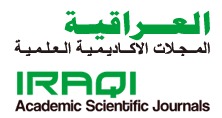uggested biomechanical model for elite 100m runners
نموذج بايوميكانيكي مقترح لعدائي النخبة 100 متر
DOI:
https://doi.org/10.33170/10.33170/volKeywords:
biomechanical model, elite runners, 100 metersAbstract
The model of strength, speed, or power produced during the race stages represents the world record for of 100 frees running in order to provide information to coaches and athletes with finding a way to determine the amount of force that is used during strength and speed training as well as identifying the determinants of strength and speed training, and the coach or the athlete can estimate of the athlete’s performance mechanism by identifying these basic elements of running performance represented by step and frequency, which are related to the training process. A model is determined using experimental data to develop relationships between variables for each of the time, instantaneous velocity, time of foot contact with the ground and the distance traveled through it and are considered the most exciting in events and rubber Muscles, polymeric and resistance training exercises such as these are very necessary . A number of researchers have found that these methods provide great benefit in speed training, especially compared to running training ,even when different exercises involve identical muscle groups and a specific movement pattern for use in training, there will be significant improvement in strength. The greatest strength gains occur in the development of speed and movement specificity in strength training may enhance the role of learning and coordination or neuromuscular compatibility. This compatibility helps to develop performance, which is the decisive factor in strength and speed is one of the first determinants. Activating the efficiency of the participating muscles and activating the efficiency of the motor units within all the muscles themselves logically contribute to improving neuromuscular compatibility during jogging.









